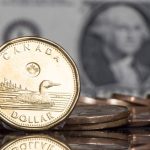Policy announcements from the Swiss National Bank and the Bank of England are in focus in European trading hours. Both are expected to keep the current setting of monetary policy unchanged, putting the spotlight on accompanying forward-looking commentary.
For the SNB, traders will want to know if the central bank intends to beef up stimulus to counter downside pressure on EUR/CHF following the latest expansion in ECB accommodation, which complicates policymakers’ deflation-fighting efforts. Needless to say, a dovish lean is likely to bode ill for the Swiss Franc, while a status-quo approach may offer the currency a lift.
For the BOE, imported disinflation courtesy of the ECB is likewise in the spotlight. On-coming Euro weakness is likely to weigh on the price of imports from the Eurozone, the UK’s top trading partner,undermining the struggle to bring the pace of price growth high enough to begin raising rates.
Comments suggesting the velocity of UK growth will be able to counter these headwinds are likely to keep tightening bets alive, boosting the British Pound. A softer tone and perhaps the abandonment of a rate hike vote from the MPC committee’s heretofore lone hawk, Ian McCafferty, would imply a longer path toward normalization. Sterling is likely to come under pressure in this scenario.
The Australian Dollar soared in overnight trade after November’s Employment report showed the economy unexpectedly added a net 71.4k jobs last month. Economists were betting on a 10k decline ahead of the release. The jobless rate fell to 5.8 percent, marking the lowest level since April 2014.
The Aussie’s advance tracked a surge in front-end bond yields, suggesting the upbeat outcome weighed against RBA rate hike speculation. Indeed, the probability of another 25bps reduction in the cash rate over the coming 12 months has dropped to 36 percent from 76 percent yesterday.














Leave A Comment